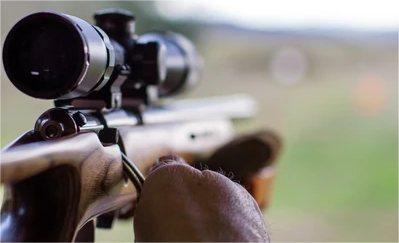Anatomy and Customization of Rifle Stocks for Enhanced Shooting experience
The evolution of rifle stocks, from their earliest inventions to the modern designs we see today, is a testament to the enduring principle of marksmanship combined with the ingenuity of customization.While the core components of the stock remain the same, refining those components to enhance the shooting experience continues to advance.This article will delve into the basic parts of a rifle stock, their functions, and how a tailor-made stock can significantly improve shooting ability and satisfaction.

A beginner’s guide to understanding rifle stock anatomy
Whether you’re a gun enthusiast, collector, or professional gunsmith, the basic structure of a rifle stock is universal.The difference is the almost unlimited demand for customization, which gives rise to myriad rifle stock styles.At its most basic, however, every rifle stock consists of four main parts: the stock, cheek rest, grip, and front end.
Stock: Stable base
The stock is the anchor point of the rifle, providing the critical link between the chamber of the rifle and the shooter.This is the part that controls the recoil.Stock designs have gone through various iterations over time, with the curved stock of the Kentucky rifle being the most recognized.This design, while aesthetically pleasing, is not the most effective way to shoot because it puts too much recoil on the shooter.
Modern rifle stocks usually have a wide stock plate to distribute recoil more efficiently, and many shooters opt for rubber stock caps to further absorb shock.The wider the surface area, the better the shooter’s control when aiming and shooting.
Cheek Rest: the shooter’s ally
The cheek rest may be the most overlooked, but it is a key factor in stock when it comes to accuracy. This is the shooter’s cheek, providing a stable platform for aiming. The design of the cheek rest – whether lowered or lifted – affects the shooter’s comfort and the rifle’s handling. Historically, dropped cheek rests were favored for their usefulness in combat, reducing weight and facilitating standing aiming.However, they have the disadvantage of delivering more recoil impact to the shooter’s face.

Grip: The grasp of precision
The grip is where the shooter’s hand makes contact with the rifle stock, and its design can greatly affect shooting technique.The classic straight grip, or English grip, is perfect for quick targeting and is common in lever-action rifles and shotguns.In contrast, the pistol grip is favored for its stability and accuracy, which is why it is the first choice of many shooters.Some pistol grips have a thumb hole, enhancing the control of sharpshooters and competitive marksmen.
Front End: Steady grip
The front end acts as a handle for the shooter’s non-trigger hand, helping with stability and control.It protects the hands from heat and provides a secure grip.The design of the front end can vary depending on the intended use of the rifle and can be flat for bench shooting or round for hand-held shooting.
In addition, the front end is often used as a mounting accessory, such as a laser sight or flashlight, expanding the functionality of the rifle.The right front end can greatly improve the shooter’s ability to maintain a steady target, whether standing or using a rest.

Customize your rifle inventory
Customizing your rifle inventory to fit your unique shooting style can be transformative.A proper stock can reduce fatigue, improve accuracy, and enhance the overall shooting experience. Gunsmiths and stock manufacturers can guide you through the process of choosing the right gun stock, grip style, and front end design to optimize your performance.
Still struggling to decide what to make of the stock? Contact us now!

